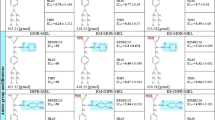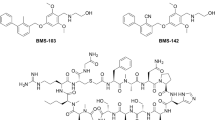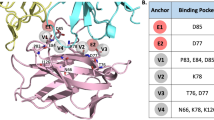Abstract
m-L-sarcolysin (m-L-SL) is an isomer of melphalan (Mel) with the di(2-chloroethyl) amino group being substituted in the meta position of phenylalanine. By covalent conjugation of amino acids to m-L-SL, a peptide complex consisting of six m-L-SL-based oligopeptides known as peptichemio (PTC) was developed previously. In the present study, the cytotoxic activity pattern of the different oligopeptides of PTC was investigated in ten human tumour cell lines representing different mechanisms of cytotoxic drug resistance using the fluorometric microculture cytotoxicity assay (FMCA). In the cell line panel, L-prolyl-m-L-sarcolysyl-L-p-fluorophenylalanine (P2) was the most active oligopeptide, showing slightly lower mean IC50 values (2.6 vs 3.9 and 4.1 microg ml(-1)) than Mel and m-L-SL. The other five oligopeptides were less active than Mel. All active oligopeptides showed mechanistic similarity to Mel as judged by the correlation analysis of the cell line panel log IC50 values (R > or = 0.90), although P2 appeared to be less sensitive to GSH-mediated drug resistance. The relative activity of Mel and P2 was found to be related to degree of proliferation, P2 being more active towards low-proliferating cell lines. P2 and Mel were then further characterized in 49 fresh human tumour samples. In these samples P2 was considerably more active than Mel and showed a higher relative solid tumour activity (2.7 to 4.5-fold). However, the correlation of log IC50s between P2 and Mel in patient cells was high (R = 0.79), indicating a similar mechanism of action in this tumour model too. Cross-resistance with other standard drugs was lower for P2 than Mel. The results show that P2 is the most potent component of PTC and demonstrates a favourable activity profile compared with Mel. These data suggest that further investigation of P2 as a potential anti-tumour agent is warranted.
This is a preview of subscription content, access via your institution
Access options
Subscribe to this journal
Receive 24 print issues and online access
$259.00 per year
only $10.79 per issue
Buy this article
- Purchase on Springer Link
- Instant access to full article PDF
Prices may be subject to local taxes which are calculated during checkout
Similar content being viewed by others
Author information
Authors and Affiliations
Rights and permissions
About this article
Cite this article
Larsson, R., Dhar, S., Ehrsson, H. et al. Comparison of the cytotoxic activity of melphalan with L-prolyl-m-L-sarcolysyl-L-p-fluorophenylalanine in human tumour cell lines and primary cultures of tumour cells from patients. Br J Cancer 78, 328–335 (1998). https://doi.org/10.1038/bjc.1998.494
Issue Date:
DOI: https://doi.org/10.1038/bjc.1998.494



